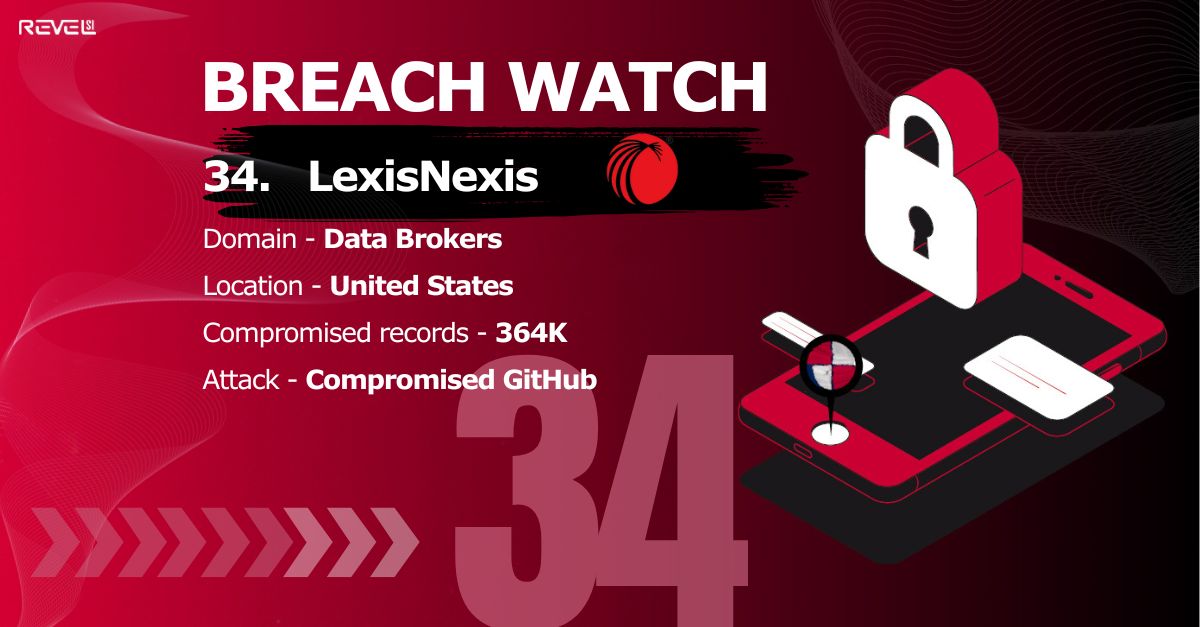Data Broker Breach: What We Know About the LexisNexis Hack

Data Broker Breach: What We Know About the LexisNexis Hack
Overview
LexisNexis Risk Solutions, one of the largest data brokers in the United States, has confirmed a major security breach affecting over 364,000 individuals. The incident, disclosed in May 2025, has raised pressing questions about the security posture of companies that hold vast amounts of personal and sensitive data.
While no financial information was exposed, the breach involved key identity elements — such as Social Security numbers, driver’s license details, and full names — that are commonly used for identity verification. For a company whose core business revolves around consumer data, the implications are significant, both reputationally and legally.
How It Happened
The breach began on December 25, 2024, when an unauthorized actor gained access to a third-party software development environment linked to LexisNexis — believed to be GitHub. The attackers exploited this platform to extract sensitive data, and the intrusion remained undetected for more than three months, until LexisNexis identified it on April 1, 2025.
Once discovered, LexisNexis launched an internal investigation and engaged cybersecurity experts to assess the damage. Their findings indicated that while core systems and financial platforms were not breached, a significant volume of personal data was compromised. The company filed a breach notification with the Maine Attorney General’s Office and began notifying affected individuals across the U.S.
Risks
The data exposed in this incident — names, dates of birth, Social Security numbers, and driver’s license information — is precisely the kind of information cybercriminals use for identity theft. Unlike passwords, this data is not easily changed. The risk of long-term fraud, synthetic identity creation, and targeted scams is now heightened for those affected.
There’s also the risk of phishing and social engineering. When attackers have legitimate contact information, their fake messages or calls become more convincing. And beyond individual victims, businesses using LexisNexis for verification services might be unknowingly impacted if stolen data is used to bypass identity checks.
Finally, the breach draws attention to broader systemic issues: how data brokers operate, how they protect their assets, and whether regulatory frameworks are strong enough to enforce accountability.
Recommendations
LexisNexis is offering two years of free credit monitoring and identity protection services through Experian. Affected individuals should take advantage of this, and also consider placing a credit freeze to prevent unauthorized accounts from being opened in their name. Monitoring bank accounts, watching for unusual emails or messages, and remaining cautious about unsolicited communications are also prudent steps in the weeks and months ahead.
Organizations — especially those with customer or identity data — should view this breach as a lesson in risk visibility. Developer environments like GitHub must be protected with strict access controls and regular audits. Third-party vendor integrations should be reviewed for potential exposure points, and breach response procedures should be rehearsed to ensure timely containment in the event of an incident.
On a policy level, this breach could accelerate calls for stronger regulation of data brokers. The lack of federal privacy legislation in the U.S. has left much of this industry self-regulated. Given the stakes, that may no longer be sustainable.
Closing Thoughts
LexisNexis isn’t the first data broker to suffer a breach, but the nature of this incident cuts especially deep. It shows how a single overlooked access point — like a third-party development environment — can lead to a massive compromise of personal data.
As consumers, we often have no choice but to be included in these data ecosystems. That’s why it’s critical that those who collect and monetize personal data are held to the highest security standards.
The real question is: how many more breaches like this will it take before that happens?
